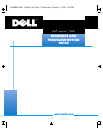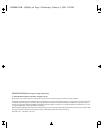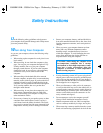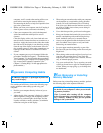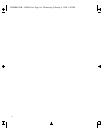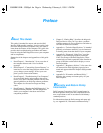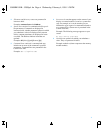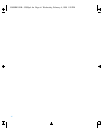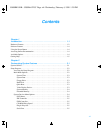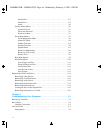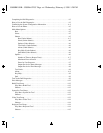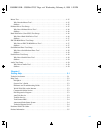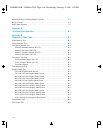
v
Safety Instructions
U
se the following safety guidelines to help protect
your computer from potential damage and to help ensure
your own personal safety.
W
hen Using Your Computer
As you use your computer, observe the following safety
guidelines:
•
When setting up the computer for work, place it on a
level surface.
•
When traveling, do not check the computer as bag-
gage. You can put your computer through an X-ray
security machine, but never put your computer
through a metal detector. If you have the computer
checked by hand, be sure to have a charged battery
available in case you are asked to turn on the
computer.
•
When traveling with the hard-disk drive removed
from the computer, wrap the drive in a nonconducting
material, such as cloth or paper. If you have the drive
checked by hand, be ready to install the drive in the
computer. You can put the hard-disk drive through an
X-ray security machine, but never put the drive
through a metal detector.
•
When traveling, do not place the computer in over-
head storage compartments where it could slide
around. Do not drop your computer or subject it to
other mechanical shocks.
•
Do not carry a battery in your pocket, purse, or other
container where metal objects (such as car keys)
could short-circuit the battery terminals. The result-
ing excessive current flow can cause extremely high
temperatures and may result in damage from burns.
•
Protect your computer, battery, and hard-disk drive
from environmental hazards such as dirt, dust, food,
liquids, temperature extremes, and overexposure to
sunlight.
•
When you move your computer between environ-
ments with very different temperature and/or
humidity ranges, condensation may form on or
within the computer. To avoid damaging the com-
puter, allow sufficient time for the moisture to
evaporate before using the computer.
•
If using alternating current (AC) power, plug the AC
adapter power cable into a properly grounded power
source. Be sure that nothing rests on your adapter’s
power cable and that the cable is not located where it
can be tripped over or stepped on.
•
When you disconnect a cable, pull on its connector
or on its strain-relief loop, not on the cable itself. As
you pull out the connector, keep it evenly aligned to
avoid bending any connector pins. Also, before you
connect a cable make sure both connectors are cor-
rectly oriented and aligned.
•
Do not attempt to service the computer yourself.
Always follow installation instructions closely.
•
Handle components with care. Hold a component
such as a memory module by its edges, not its pins.
•
When removing a memory module from the system
board or disconnecting a peripheral device from the
CAUTION: When taking the computer from
low-temperature conditions into a warmer
environment or from high-temperature condi-
tions into a cooler environment, allow the
computer to acclimate to room temperature
before turning on power.
55899BK1.BK : 55899si1.fm Page v Wednesday, February 4, 1998 1:20 PM



